Monkey is any of numerous lively mammals that rank among the most intelligent animals. Scientists classify monkeys with apes and human beings in the order (large scientific group) called Primates. The intelligence of monkeys enables them to adapt to a broad range of environments. Monkeys even use stones and other objects as simple tools, often for finding food.
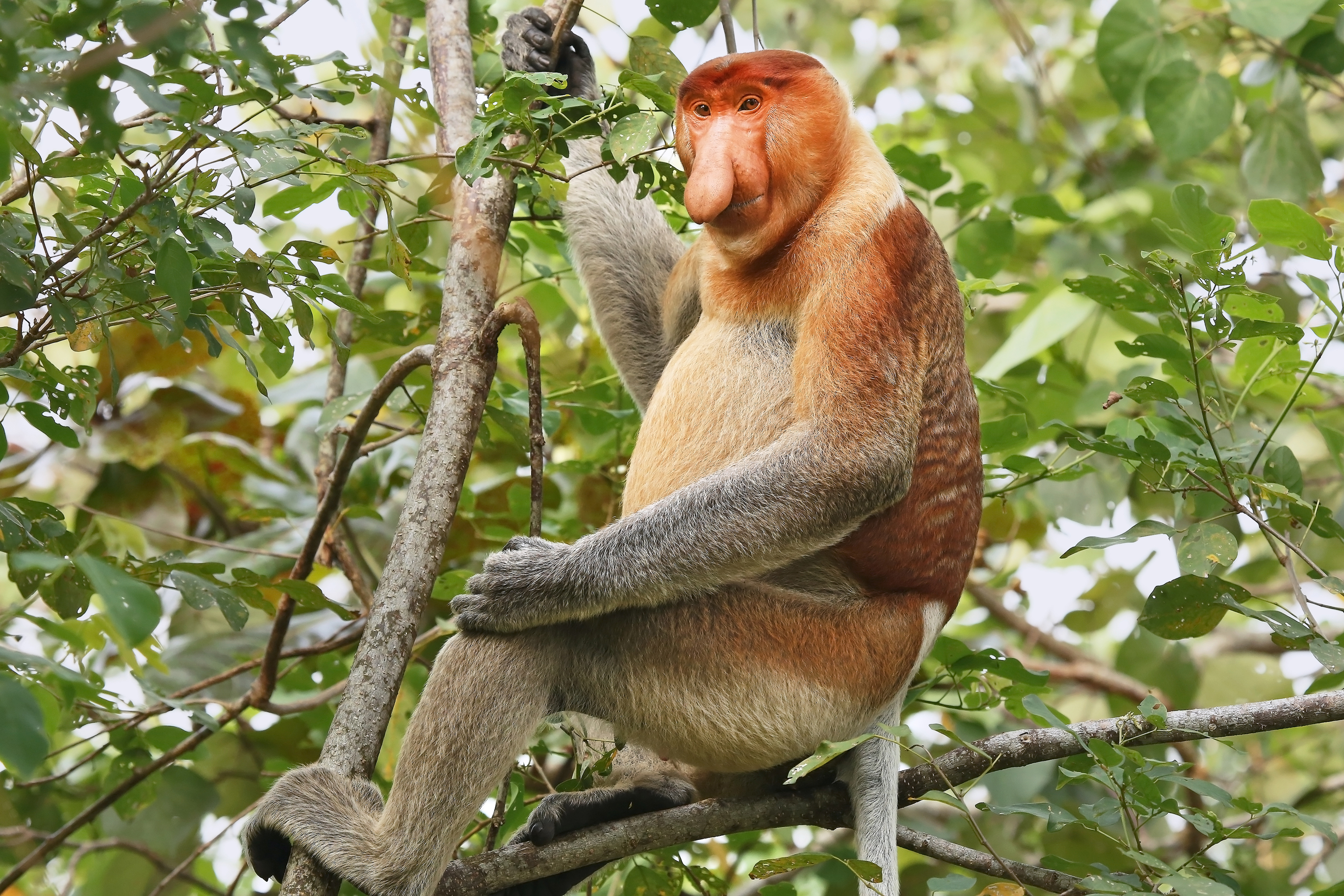
Most species (kinds) of monkeys live in tropical regions of Central and South America, Africa, and Asia. Monkeys typically inhabit forests, and some kinds spend their entire life in the trees. Some African and Asian species live in savannas (grasslands with scattered trees) and spend most of their life on the ground. But even these monkeys sleep in trees—or on steep cliffs—for protection at night. All monkeys live in groups.

Monkeys vary greatly in size. One of the smallest species, the pygmy marmoset, measures only about 6 inches (15 centimeters) long, not including the tail. The mandrill, one of the largest species, may grow as long as 32 inches (81 centimeters), not including the tail.
Many people believe apes—bonobos, chimpanzees, gibbons, gorillas, and orangutans—are monkeys. But monkeys and apes differ in several ways. For example, apes are more intelligent than monkeys. Most monkeys have a tail, but none of the apes do. Monkeys are smaller than most apes. Apes are expert climbers. Monkeys generally run, jump, and leap among tree branches.
Because of the similarities between monkeys and human beings, scientists have used monkeys in research on human behavior and disease. For example, a blood substance called the Rh factor was discovered during experiments with the rhesus monkey.
Human activities have greatly reduced the number of monkeys throughout the world. Some people hunt monkeys for food. Others catch them for pets. The clearing of land for agricultural, housing, and industrial developments has reduced the amount of living space available to monkeys. A number of species of New World and Old World monkeys are threatened with extinction.
Kinds of monkeys
Scientists classify monkeys into two major groups, New World monkeys and Old World monkeys. New World monkeys live in Central and South America, and Old World monkeys are found in Africa and Asia. The two groups differ in several ways. For example, New World monkeys have nostrils spaced widely apart. The nostrils of Old World monkeys are close together. Most kinds of New World monkeys have 36 teeth. Old World monkeys have 32 teeth, as do humans. Some species of New World monkeys can grasp objects with their tail, but no Old World monkey can.
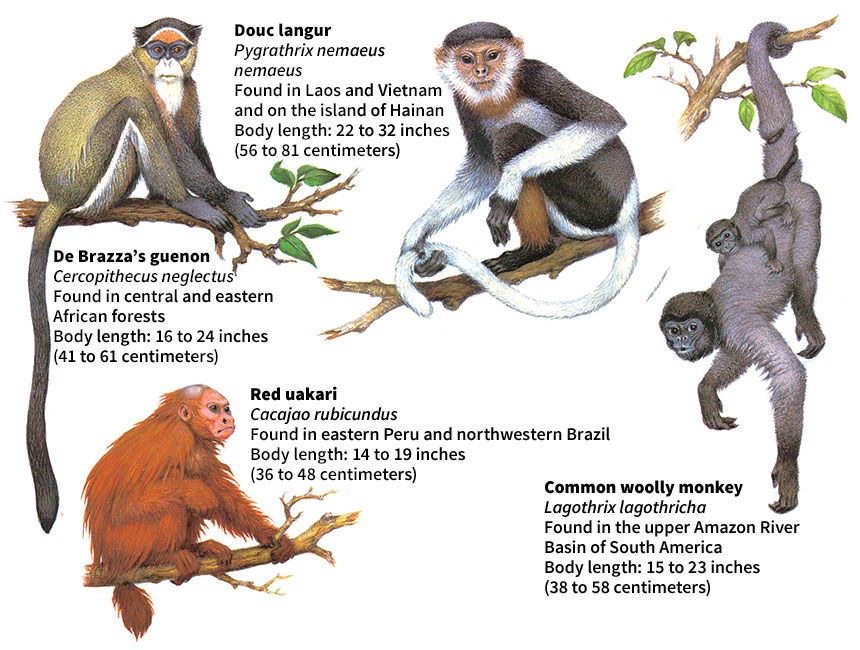

New World monkeys have a remarkable variety of sizes, shapes, and colors. They include capuchins, howlers, marmosets, muriquis, night monkeys, sakis, spider monkeys, squirrel monkeys, tamarins, titis, uakaris, and woolly monkeys. Muriquis are sometimes called woolly spider monkeys, and night monkeys are also known as owl monkeys or douroucoulis. All New World monkeys are arboreal—that is, they live in trees.
Old World monkeys include baboons, colobus monkeys, guenons, langurs, and macaques. Some Old World monkeys, including colobus monkeys and langurs, are leaf-eating monkeys and live mainly in trees. Many other Old World monkeys live on the ground. Among the monkeys that live on the ground, the males may be twice as large as the females.
The body of a monkey
All monkeys, including those that live on the ground, are the descendants of monkeys that live in trees. As a result, all monkeys have a body primarily suited for living in and moving through trees. For example, monkeys have long arms and legs that help them climb, leap, and run. They also can use their hands and feet to grasp objects—including tree branches. Most species have a long tail that helps them keep their balance. Some New World monkeys can use their tail like a hand to grasp branches and food while moving through the trees.
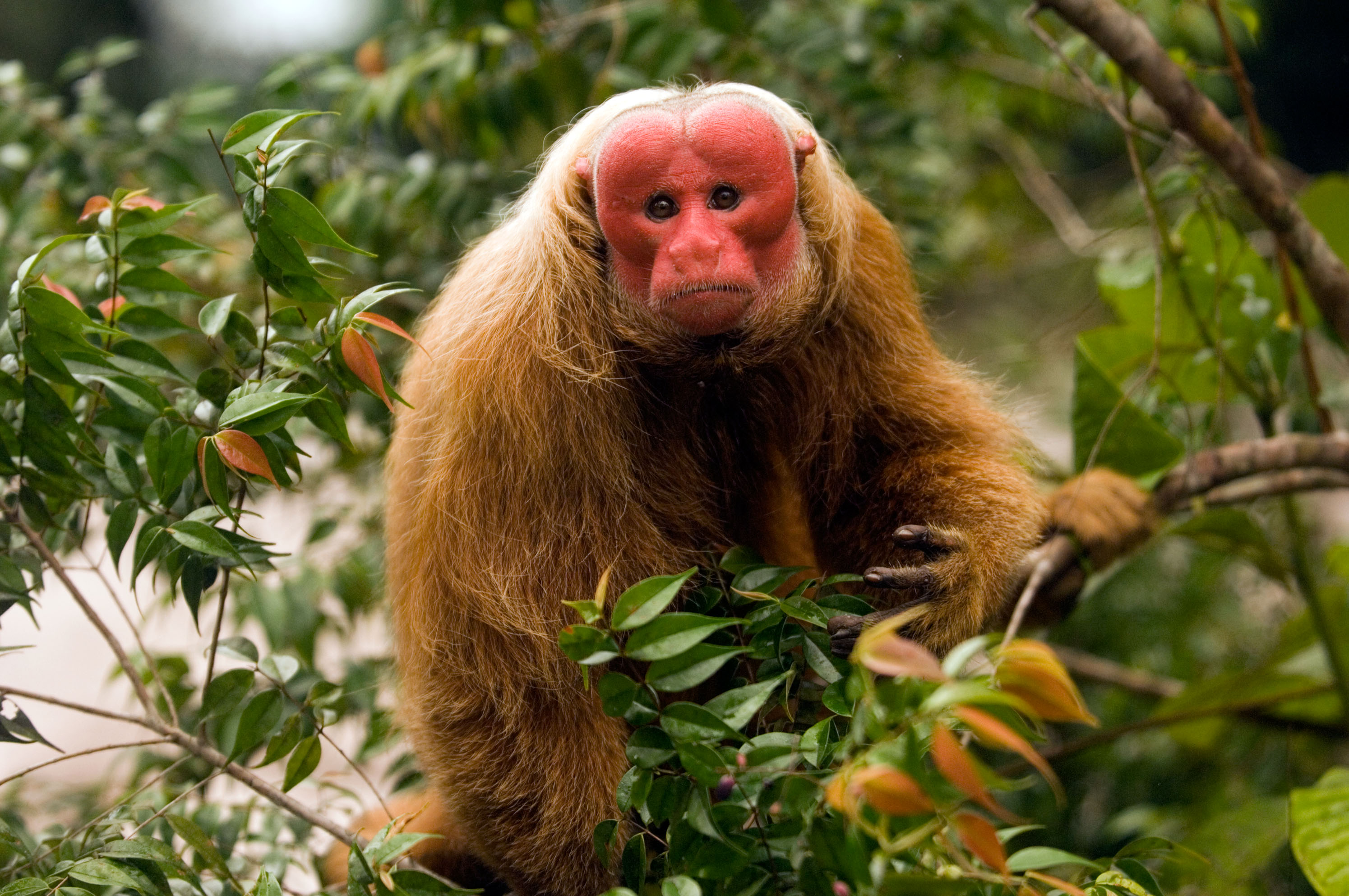
Head.
Monkeys depend primarily on their eyes to gather information about their surroundings. They have large eyes that face forward. Monkeys can see in depth and distinguish colors. Their eyes help them judge distances and tell the size, shape, and ripeness of food.
Some monkeys, including baboons, mandrills, and sakis, have large, heavy jaws and eat grass and leaves. Smaller monkeys, such as marmosets and squirrel monkeys, have smaller, lighter jaws. They eat mostly fruit and insects. Many kinds of Old World monkeys have cheek pouches much like those of hamsters and squirrels. The pouches enable the monkeys to store food temporarily. No New World monkey has these pouches.
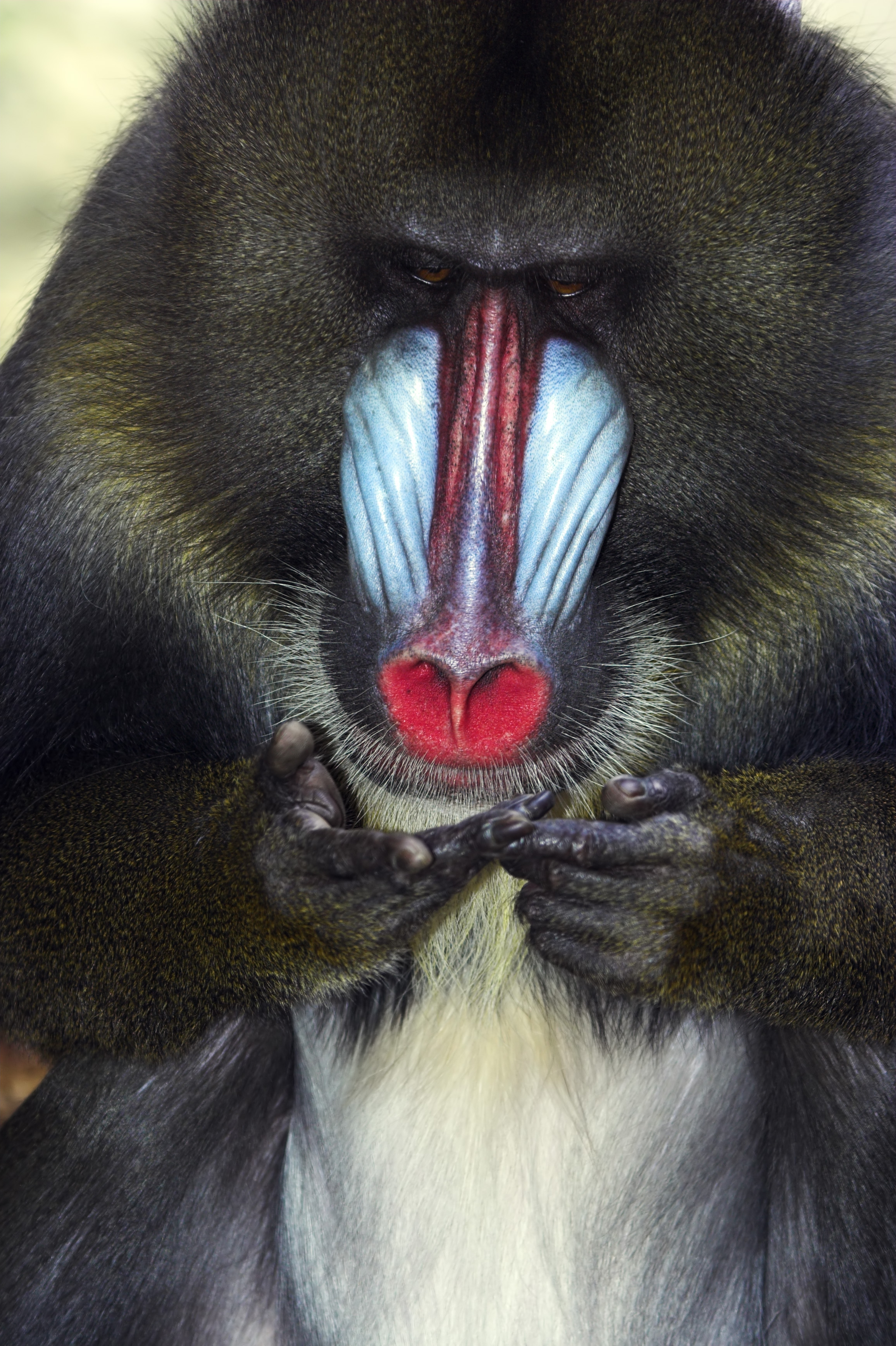
Arms and legs.
Monkeys usually walk and run on all fours, either on tree branches or on the ground. Most species have legs that are slightly longer than their arms. Many kinds of monkeys can stand and even run on their legs, but only for a short period of time. Monkeys usually stand or run on their legs when carrying food, peering over high grass, or threatening enemies or members of the group.
Hands and feet.
Old World monkeys have opposable thumbs—that is, the thumb can be placed opposite any of the other fingers. This enables a monkey to grasp small food items. Most kinds of New World monkeys have thumbs that are only partly opposable. Their thumbs also do not move so freely as those of Old World monkeys. Two kinds of New World monkeys—muriquis and spider monkeys—have only tiny thumbs or no thumbs at all. Among Old World monkeys, colobus monkeys have no thumbs.
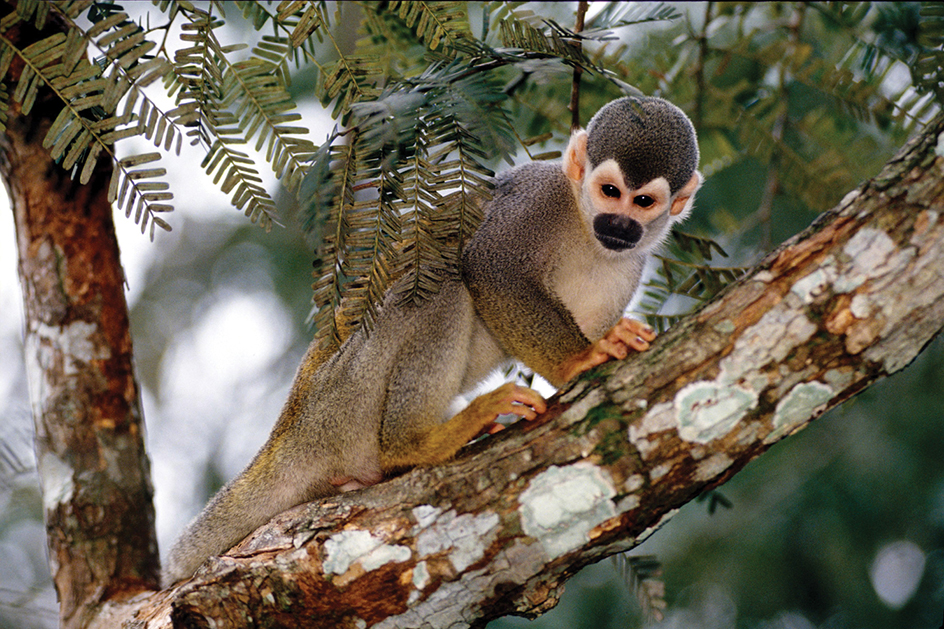
The feet of most monkeys are larger and more powerful than their hands. All monkeys have five toes on each foot. The big toes look and function much like thumbs, giving the monkey an extra pair of grasping “hands.” Marmosets and tamarins have claws on their fingers and toes, except for their big toes, which have a nail. All other kinds of monkeys have flat or flattish nails on all their fingers and toes.
Tail.
Most monkeys that live on the ground have a shorter tail than do most that live in trees. Arboreal monkeys may have a tail longer than their body. They use their tail for balancing on tree branches. They also use it as an air brake—that is, to slow themselves down when they leap from branch to branch. Some kinds of New World monkeys, including howlers, spider monkeys, and woolly monkeys, can grasp objects with their tails. The tails of such monkeys have bare skin at the end. The tails of other monkeys are completely covered with hair.
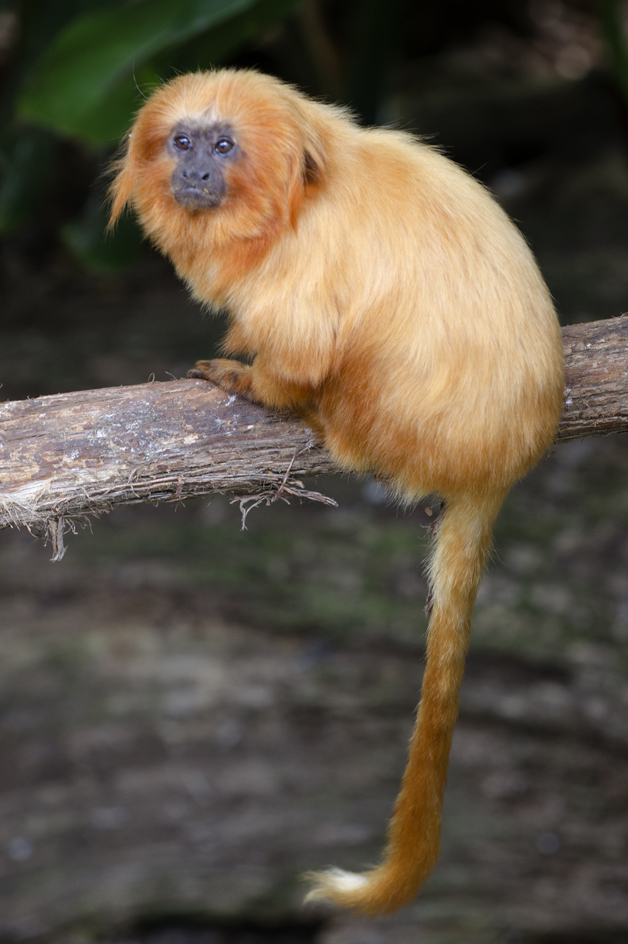
The life of a monkey
Monkeys in captivity live longer than other animals of similar size. They also live longer than most other kinds of mammals, except apes and human beings. Capuchins may live 40 years. Baboons and some macaques may live 30 years. Life spans are shorter in the wild because of disease and other factors.
Food.
Most kinds of monkeys eat almost anything they can find. Their food includes birds and birds’ eggs, flowers, frogs, fruit, grass, insects, leaves, lizards, nuts, and roots. Baboons may catch and eat such animals as newborn antelope.
Leaves make up about 40 per cent of the food eaten by banded langurs and over 80 per cent of the food of black and white colobus monkeys. All leaf-eating monkeys have sharp crests on their back teeth for shredding leaves. They also have large salivary glands and a large stomach that is divided into compartments. Such specialized structures help leaf-eating monkeys digest their coarse food. Unlike other Old World monkeys, leaf-eating monkeys do not have cheek pouches. 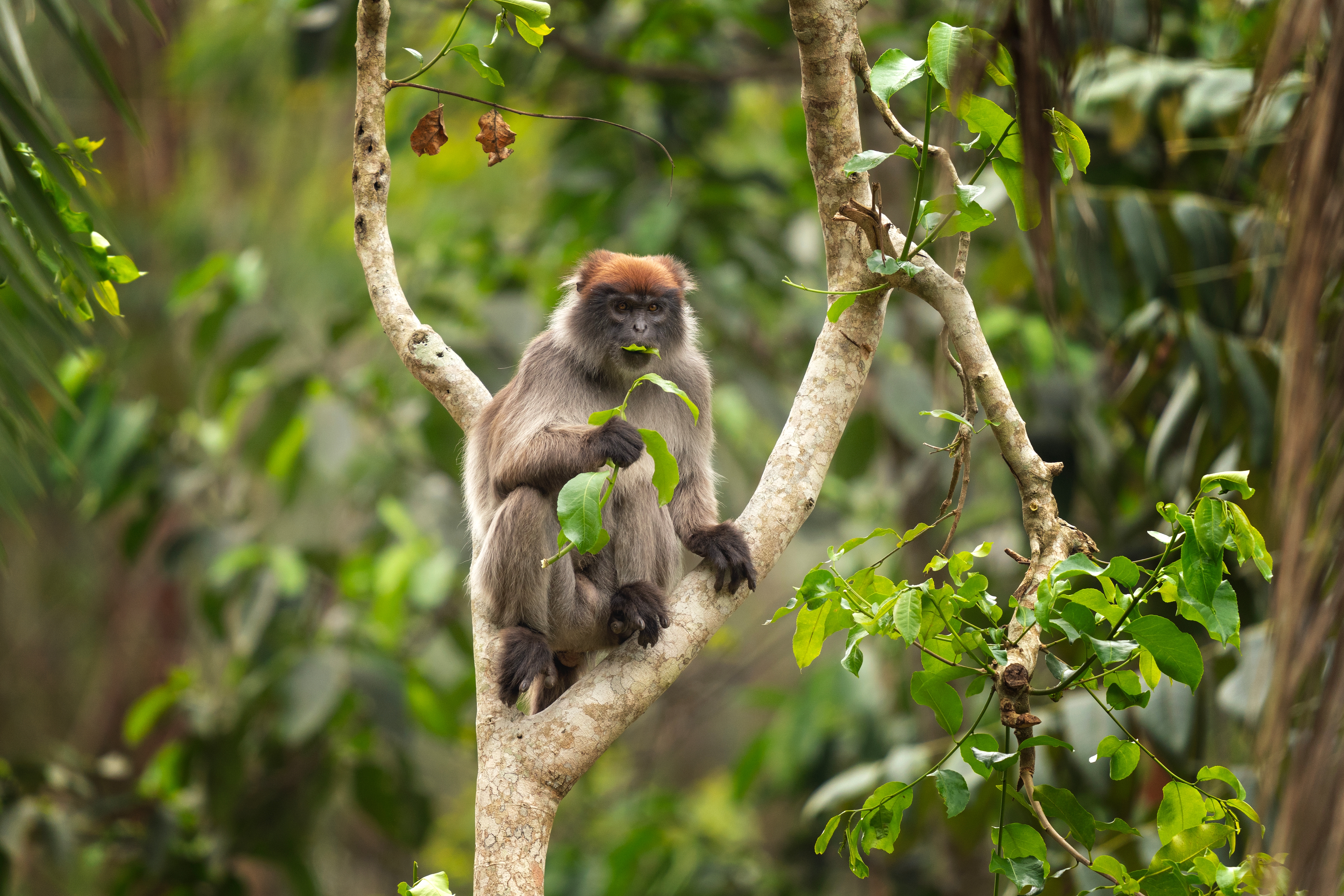
Young.
Most kinds of monkeys give birth to one baby at a time. But marmosets and tamarins sometimes produce twins or even triplets. Scientists do not know the length of pregnancy of many species of monkeys, but the females of some species carry their young inside their bodies for about 41/2 months to about 8 months.
Most baby monkeys depend completely on their mother for food and security. They nurse on her milk for a few weeks to two years, depending on the species. A baby monkey hangs onto its mother almost from the moment of birth by grasping her fur. The mother carries the infant until it can travel safely on its own. At first, the infant clings to its mother’s underside. Later, the young monkey rides on its mother’s back. Among three kinds of New World monkeys—marmosets, night monkeys, and titis—the father may carry the young on his back, giving them to the female for feeding.
Group life.
All species of monkeys live together in social groups. New World monkey groups seldom consist of more than 20 members. Old World monkey groups usually have from 30 to 100 members. There are three kinds of monkey groups: (1) family groups, (2) multimale groups, and (3) one-male groups.
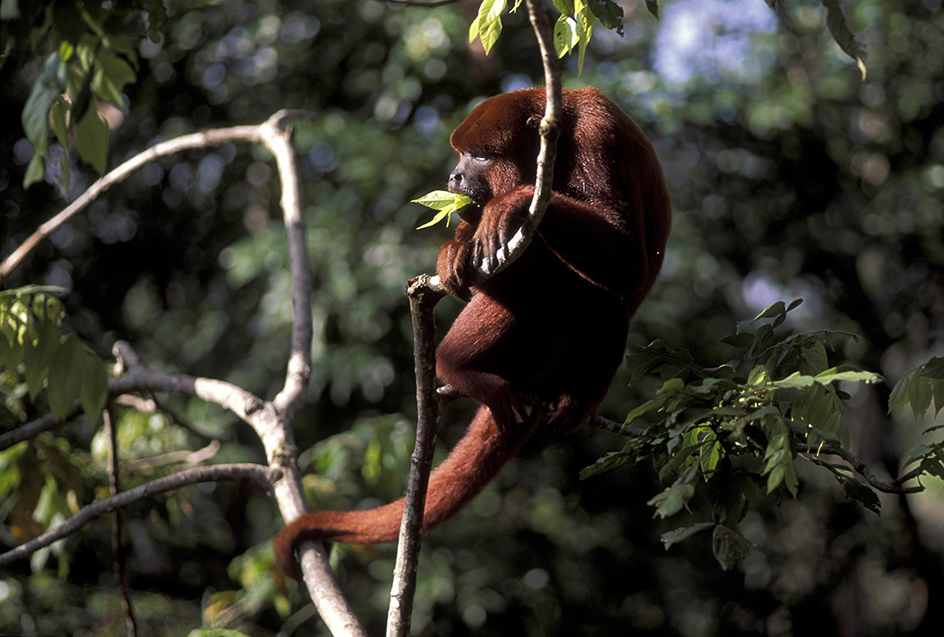
Family groups consist of an adult male, an adult female, and their young. At least three kinds of New World monkeys—night monkeys, sakis, and titis—live in family groups. Three Old World species may also live in family groups. They are De Brazza’s guenons, Mentawi Island langurs, and Hamlyn’s owl-faced monkeys.
Multimale groups may consist of a number of adult males, about twice as many adult females, and their young. Most New World monkeys live in such groups, including capuchins, howlers, spider monkeys, squirrel monkeys, and marmosets. Many Old World monkeys, including langurs, macaques, and most baboons, also live in multimale groups.

One-male groups consist of one adult male, several adult females, and their young. Young adult males and females may also belong to the group. Certain species of Old World monkeys live in such groups. They include guenons, geladas, and hamadryas baboons.
In general, monkeys that live in trees have a looser social organization than do monkeys that live on the ground. For example, most guenons and mangabeys live in trees and form one-male groups of which the male is the leader. But he does not have strong leadership, and he has little control over the actions of other members of his group. The females in the group may mate with other males. Members of his group may leave, and new members may join. But monkeys that live on the ground, including most baboons, live in groups that are more tightly organized. A multimale baboon group is closed—that is, few members leave and few strangers join the group. Several dominant males control the group’s movements, stop fights within the group, punish group members, and protect the group against enemies. The dominant males sometimes prevent other males in the group from mating with the females.
Scientists believe monkeys that live in trees have looser groups because these species are safer than those that live on the ground. The worst enemies of monkeys that live in trees are large eagles. Eagles kill adult and young monkeys with their powerful claws. Monkeys that live on the ground have many other enemies, including cheetahs, hyenas, jackals, leopards, and lions. These monkeys spend time in areas that have no nearby trees into which they can escape. As a result, they must be tightly organized under strong leaders so they can avoid danger or defend themselves.
Monkeys that live on the ground defend themselves chiefly by threatening their enemies. If a cheetah approaches a group of baboons, for example, the leaders of the group gather together to face the danger. Each male baboon shows his long canine teeth and barks. If these actions do not frighten the cheetah away, the baboons may attack.
Communication.
Loading the player...
Monkey talk
Monkeys communicate with one another in various ways. For example, a male rhesus monkey threatens members of its group by staring, opening its mouth and showing its teeth, bobbing its head, and slapping the ground with its hands. Social grooming helps maintain friendly relations between baboons. In grooming, one baboon carefully cleans the fur of another. Both animals seem to find satisfaction in this activity. Baboons spend several hours a day grooming.
